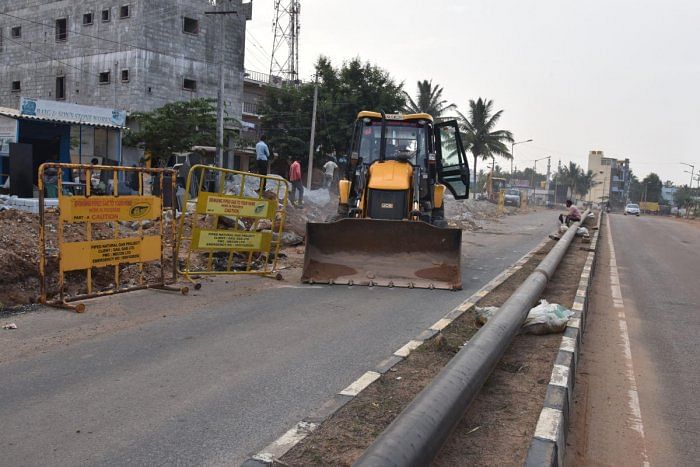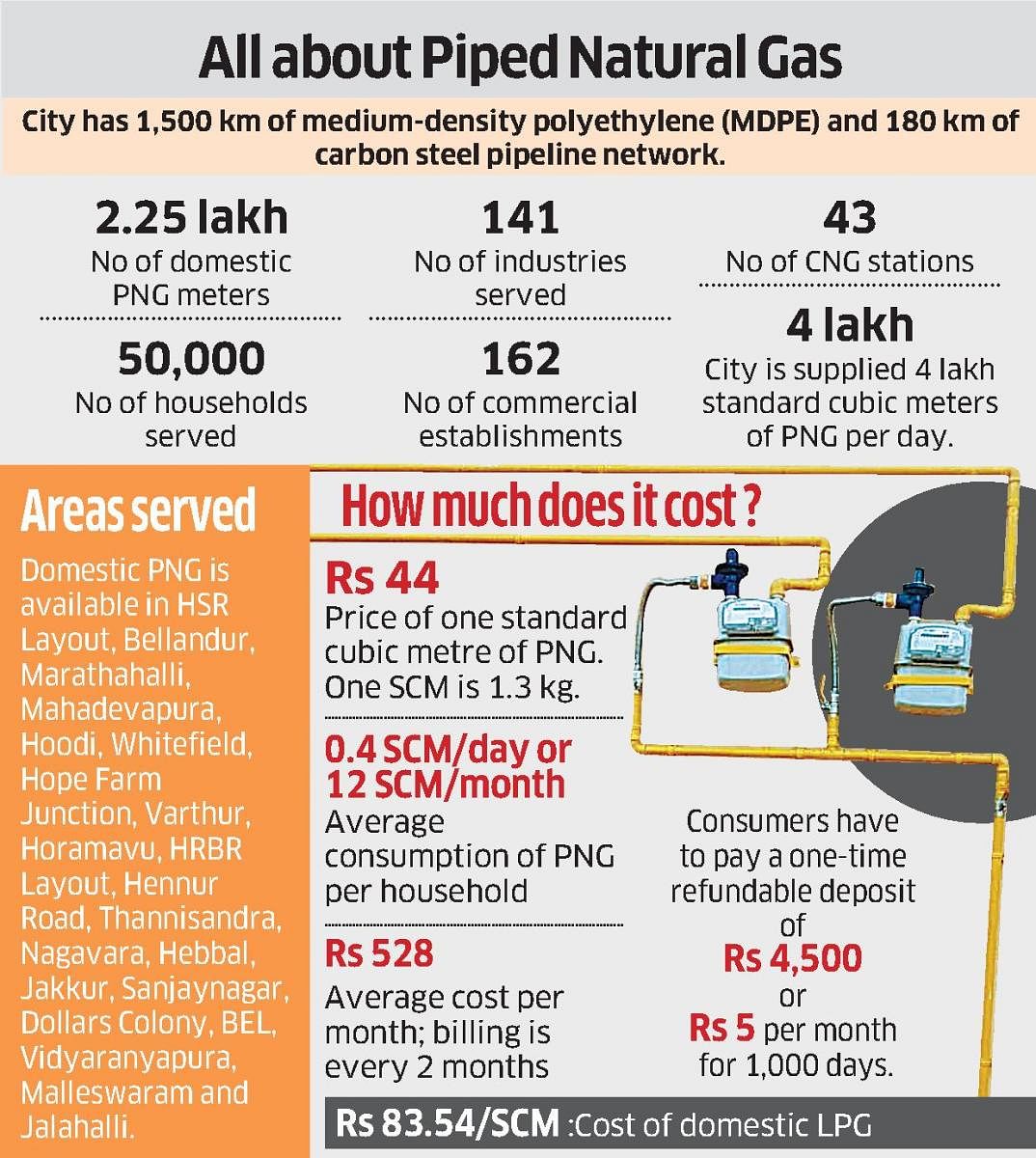

The project to supply piped natural gas (PNG) to Bengaluru has made rapid strides in the seven years since it launched but only after some really painstaking efforts.
Gail Gas Limited, a wholly-owned subsidiary of Gail India Limited, won the City Gas Distribution (CGD) contract in 2015 to supply piped natural gas to Bengaluru Urban, Bengaluru Rural and Mangaluru in Karnataka. The twin districts of Bengaluru get the gas supply from the 1,200-km-long mainline that runs underground from Dabhol in Maharashtra to Bidadi in the Ramanagara district. The supply to the port city comes from the Mangaluru-Kochi line.
From the Bidadi line, Gail India Limited laid a 23-km subline connecting the Outer Ring Road (ORR). Gail Gas Limited took over from here and laid a 73-km pipeline network, providing end-to-end connectivity to the ORR. The next step was setting up District Regulating Stations (DRS). A DRS is installed at the node of the pipeline network from where the gas is supplied to different areas at low-pressure levels. One DRS can supply gas to one lakh people.
The agency has so far set up 25 DRSs and laid a tertiary 180-km network of carbon steel pipelines mainly to connect localities around the ORR. These carbon steel pipelines are, in turn, linked to various residential, commercial and industrial establishments through a massive 1,500-km-long network of medium-density polyethene pipelines to provide individual connections. Individual houses get the gas supply through pipes that run in well-ventilated spaces.
The company currently supplies 4 lakh standard cubic metres of PNG per day.
That PNG is safer, cheaper and more convenient than liquefied petroleum gas (LPG) is a well-established fact. PNG is safe because it is lighter than air and cannot be pilfered.
“These advantages are clearly attracting people to PNG,” said Vivek Wathodkar, Chief General Manager (CGD), Gail Gas Limited, Bengaluru.
Sreelatha Sankar, of Horamavu, agreed. She has been using PNG for nearly three months now. “We used to pay Rs 1,000 for an LPG cylinder, and now for the same amount of utilisation, we pay only Rs 600. The savings go up as consumption rises,” she said. “The heat is more intense as compared to LPG. “I can cook faster.”
Another user pointed out that PNG was the best option for the working class. “Booking a gas cylinder on time was a genuine problem. For those working round the clock, receiving the cylinder delivery was equally difficult,” another resident of Horamavu said.
Kochu Sankar, president of the Trinity Enclave Residents’ Welfare Association, said there was a need to create more awareness.
“We were trying to get the connections for nearly two years now. Finally in January this year, our area received connections,” he said.
A number of commercial establishments and industries have opted for PNG. These include shopping malls, hotels, software companies, pharmaceutical firms and industrial units. The demand for domestic connections is equally strong with at least 65 connections being added every day, Wathokdar said.
When Wathodkar took charge in 2018, the city was receiving about 75,000 standard cubic metres of PNG. This figure is now 4 lakh.
The demand is so strong, Wathodkar said, that Gail has not been able to fully meet it. “It’s a tedious process with a long gestation period. We need permissions from various external authorities for laying and developing the pipeline network,” he explained.
Another challenge is road-digging by external agencies. Gail is coordinating with civic agencies to ensure they do not cause any disruption to the pipeline network when digging up roads. Asked about the expansion to the CBD, Wathodkar said that would take another four to five years.